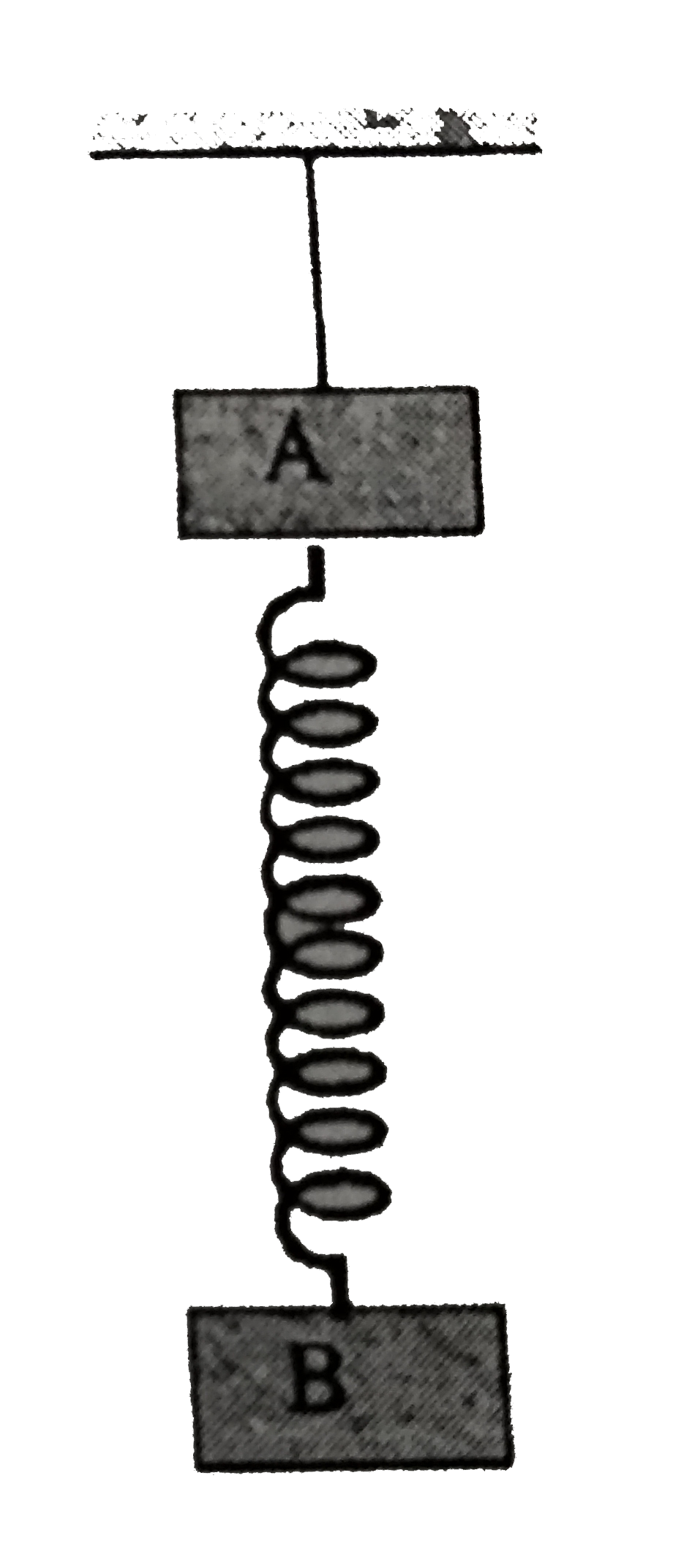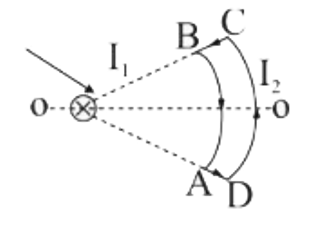In the given figure both the bocks have equal mass. When the thread is cut, which of the following statements give correct discription immediately after the thread is cut?

Relative to the block A, acceleration of block B is 2g upwards.
Relative to the block B, acceleratio of block A is 2g downwards.
Relative to the ground, acceleratons of the blocks A and B are both g downwards.
Reletive to the groujnd, accelerations of the blocks A and B are 2 g downwards and zero respectively.
The correct Answer is:A, B, D
Step by step video & image solution for In the given figure both the bocks have equal mass. When the thread is cut, which of the following statements give correct discription immediately after the thread is cut? by Physics experts to help you in doubts & scoring excellent marks in Class 12 exams.
Updated on:21/07/2023Topper's Solved these Questions
- NEWTON'S LAWS OF MOTION & FRICTIONBook:ALLENChapter:NEWTON'S LAWS OF MOTION & FRICTIONExercise:EXERCISE (JM)
Explore 6 Videos
- NEWTON'S LAWS OF MOTION & FRICTIONBook:ALLENChapter:NEWTON'S LAWS OF MOTION & FRICTIONExercise:EXERCISE (JA)
Explore 4 Videos
- NEWTON'S LAWS OF MOTION & FRICTIONBook:ALLENChapter:NEWTON'S LAWS OF MOTION & FRICTIONExercise:EXERCISE (O-1)
Explore 51 Videos
- MOTION IN A PALNEBook:ALLENChapter:MOTION IN A PALNEExercise:SOLVED EXAMPLE
Explore 28 Videos
- NEWTONS LAWS OF MOTIONBook:ALLENChapter:NEWTONS LAWS OF MOTIONExercise:EXERCISE-III
Explore 28 Videos
Similar Questions
Knowledge Check
Based on the figure given below which of the following statements is not correct ?
 AMovement of solvent molecules will take place from chamber Ato B.BMovement of solute will take place from A to BCPresence of a semi-permeable is a per- requisite for this process to occur.Dthe direction and rate of osmosis depends on both the pressure gradient and concentration gradient.
AMovement of solvent molecules will take place from chamber Ato B.BMovement of solute will take place from A to BCPresence of a semi-permeable is a per- requisite for this process to occur.Dthe direction and rate of osmosis depends on both the pressure gradient and concentration gradient.Refer to the given figures showing two types of glands

Which of the following statements regarding these glands is not correct ?AThese are the multicellular glands which pour their secretion directly through ducts at the site of actionBSebaceous glands present in human skin are 'P' type of glandsCBrunner's glands of human intestine and sweat glands of human skin are 'Q' type of glandsDIn 'P' type of glands, secretory intestine and sweat of flask like structure where in 'Q' type of glands, secretory portion is both tubular and flask shaped.
Which of the following statement is (are) correct in the given figure ?

View SolutionBased on the figure given below which of the following statements is not correct

View SolutionBased on the figure given below which of the following statements is not correct ?

View SolutionWhich of the following statements is not correct regarding the figure given below ?

View SolutionA small mass m and its supporting wire because a simple pendulum when the horizontal cord is cut . Find the ratio of the tension in the supporting wire immediately after the cord is cut to the tension in the wire before the cord is cut

View SolutionA particle of mass m is moving along the x-axis with speed v when It collides with a particle of mass 2m initially at rest. After the collision, the first particle has come to rest and the second particle has split into two equal-mass pieces that are shown in the figure. Which of the following statements correctly describes the speeds of the two places? (θ>0)

View Solution

